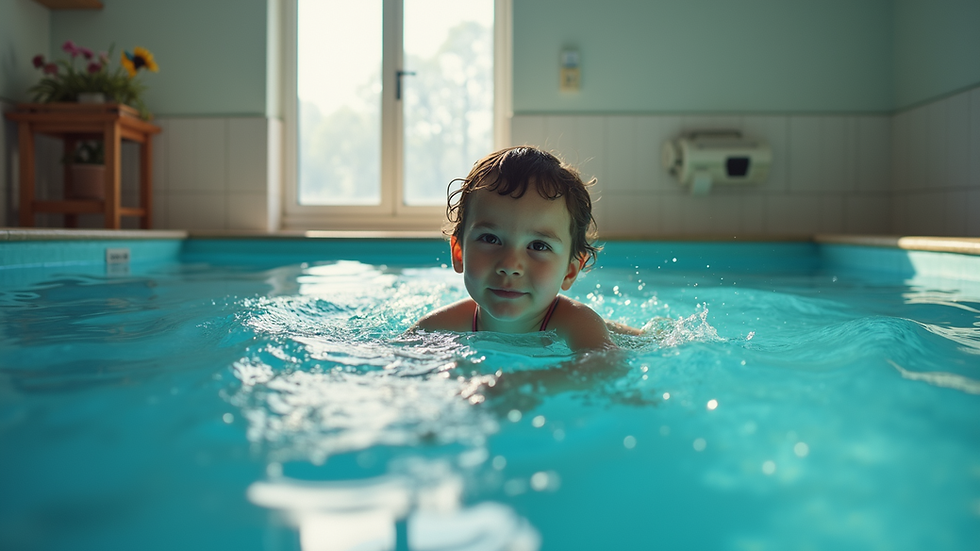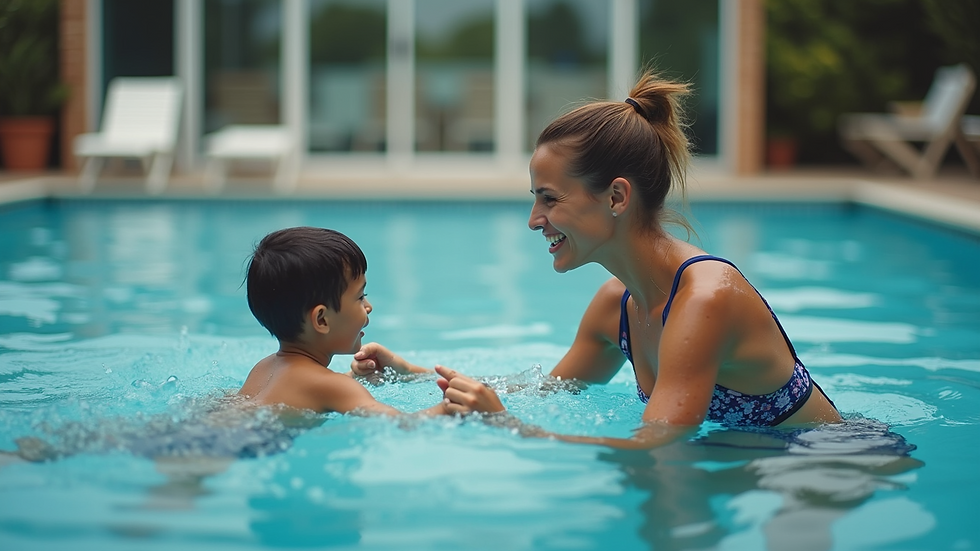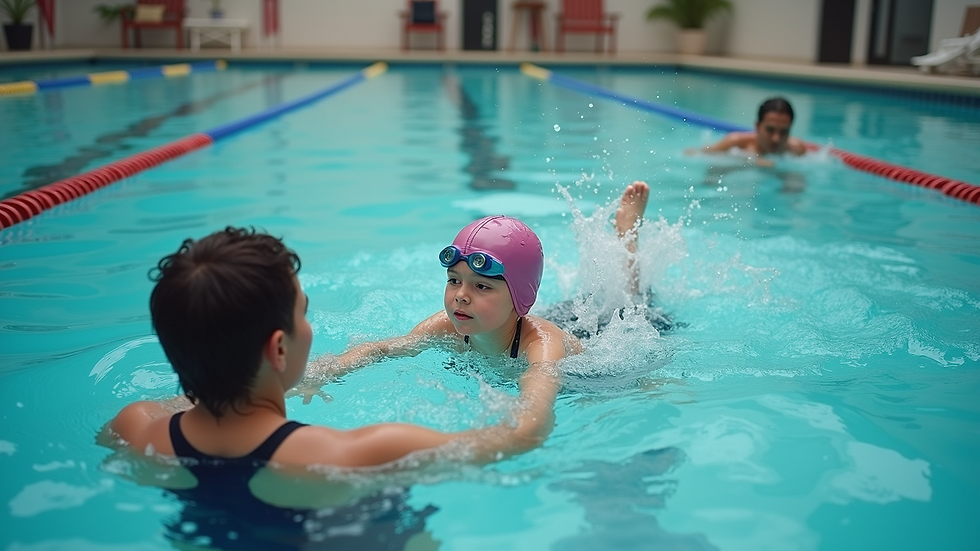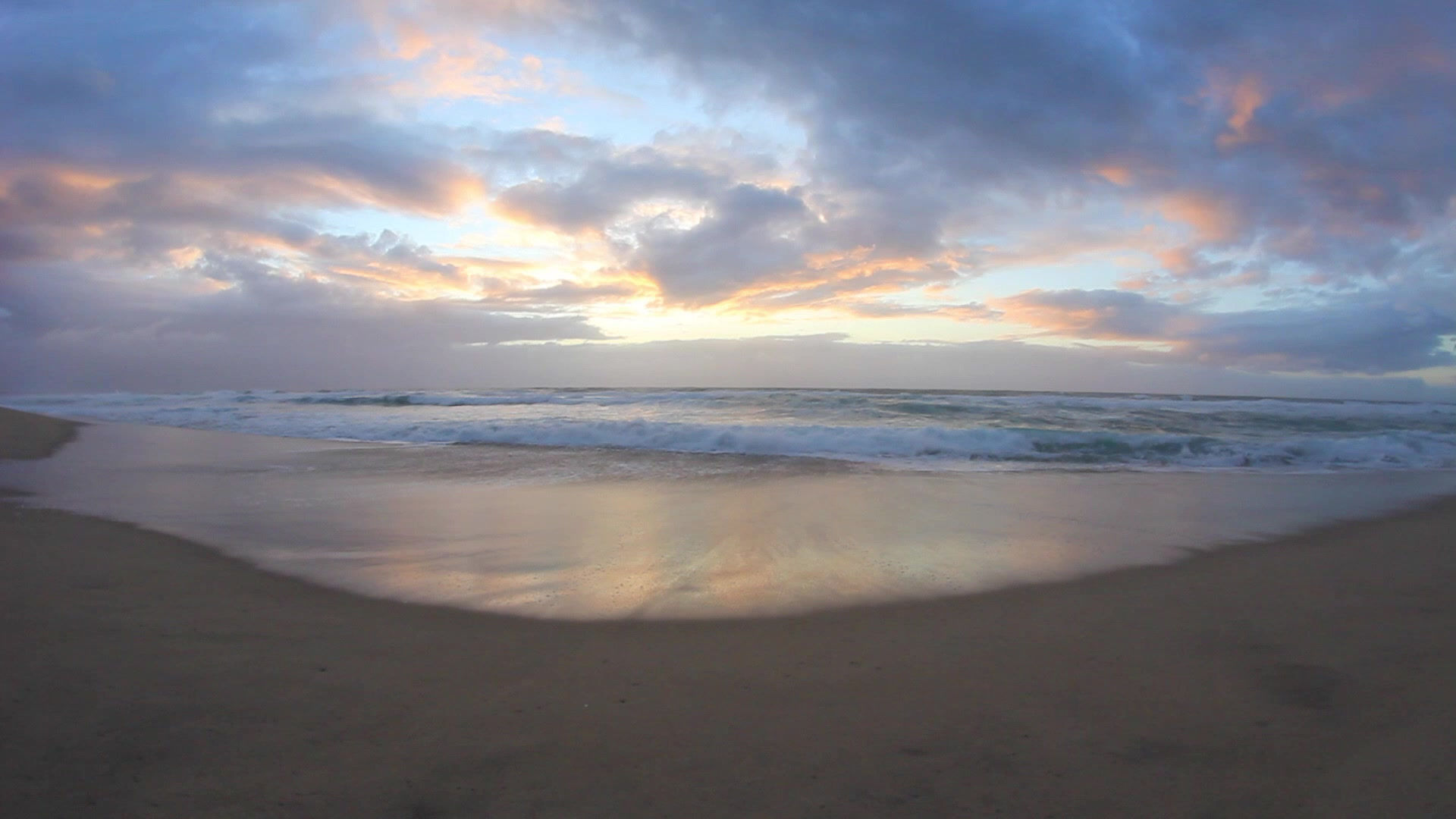How to Choose the Perfect Swim Lessons
- Pediatric Survival Swim

- Sep 4
- 4 min read
Choosing the right swim lessons for your little one can feel overwhelming. There are so many options, and you want to make sure your child is safe, confident, and having fun in the water. I’ve been through this journey, and I want to share what I’ve learned about picking the perfect program. It’s not just about teaching kids to swim; it’s about giving them life-saving skills and peace of mind for you.
Why Child Swim Safety Tips Matter More Than Ever
Water safety is a top priority for families with young children. Drowning is a leading cause of accidental death in kids under five, and that’s a scary fact. But here’s the good news: with the right approach, you can drastically reduce the risks. That’s why child swim safety tips are so important.
Start by understanding that swim lessons are not just about strokes and splashes. They’re about survival skills. Teaching your child how to float, turn over, and get to the pool edge can save their life. Look for programs that emphasize these skills early on.
Here are some key child swim safety tips to keep in mind:
Always supervise children around water, even if they know how to swim.
Choose swim lessons that focus on water survival, not just swimming techniques.
Make sure the instructor is certified in pediatric water safety.
Look for small class sizes to ensure personalized attention.
Check that the facility has clean, warm water and a safe environment.

What to Look for in a Swim Lesson Program
When you’re searching for swim lessons, it’s easy to get lost in the details. But here’s what really matters:
1. Instructor Qualifications
The best programs have instructors trained specifically in teaching young children. They understand how to communicate with little ones and keep them calm in the water. Certifications from organizations like specialized pediatric swim programs are a must.
2. Class Size and Structure
One-on-one lessons are ideal. Young children need lots of individual attention to build confidence and learn skills properly. Group lessons can work too, but make sure the instructor can give each child enough focus.
3. Curriculum Focus
Look for a curriculum that prioritizes survival skills first. This means teaching kids how to:
Hold their breath underwater
Float on their back
Roll over from front to back
Swim to the pool edge and climb out
These skills are the foundation of water safety.
4. Facility and Environment
A warm, clean pool with shallow areas is best for young children. The environment should feel welcoming and safe. Check if the pool has safety features like non-slip surfaces and lifeguards on duty.
5. Parent Involvement
Some programs encourage parents to be in the water or watch closely. This can help your child feel secure. While we don't typically have parent in the water for survival swim lessons per se, we are not above having the parent in the lesson if the child is more comfortable with it being so.

How expensive are swimming lessons?
Cost is always a factor when choosing swim lessons. Prices can vary widely depending on location, instructor experience, and class size. Here’s a quick breakdown to help you budget:
Group lessons: Usually range from $30 to $60 per session. These are more affordable but may have less individual attention.
Private lessons: Can cost $50 to $100 or more per session. These offer personalized instruction and faster progress.
Specialized survival swim programs: These might be priced higher due to their focus on life-saving skills and rapid mastery techniques.
Remember, investing in quality swim lessons is investing in your child’s safety. It’s worth paying a bit more for a program that truly prepares your child for water safety.
How to Prepare Your Child for Swim Lessons
Getting your child ready for swim lessons can make a big difference in how they respond. Here are some tips to help:
Talk about the water: Explain what will happen in the lessons and how fun it will be.
Visit the pool beforehand: Let your child get comfortable with the environment.
Bring the right gear: Swimsuit, goggles, swim cap, and a towel.
Stay positive: Celebrate small wins and encourage your child even if they’re nervous.
Be patient: Every child learns at their own pace.
Your attitude matters a lot. If you’re calm and excited, your child will pick up on that energy.
Why I Recommend Pediatric Survival Swim Programs
After researching and trying different options, I found that specialized programs like Pediatric Survival Swim stand out. They focus on rapid mastery of survival skills, which is exactly what young children need.
These programs teach kids how to save themselves in an emergency, not just how to swim laps. The instructors are experts in pediatric water safety, and the lessons are designed to build confidence quickly.
If you want your child to have the best chance of staying safe around water, this kind of program is worth considering.

Making the Most of Your Child’s Swim Lessons
Once you’ve chosen the right program, here’s how to get the most out of it:
Attend all sessions: Consistency is key to building skills.
Stay involved: Watch lessons and ask the instructor questions.
Encourage water play: Safe water games can boost comfort and skills.
Keep safety first: Always supervise your child around water, no matter their skill level.
Remember, swim lessons are just one part of water safety. Your vigilance and care are just as important.
Choosing the perfect swim lessons is about more than just teaching your child to swim. It’s about giving them the tools to stay safe and confident in the water. With the right program, you can feel reassured that your child is learning essential survival skills in a supportive, fun environment. Take your time, ask questions, and trust your instincts. Your child’s safety is worth it.




Comments